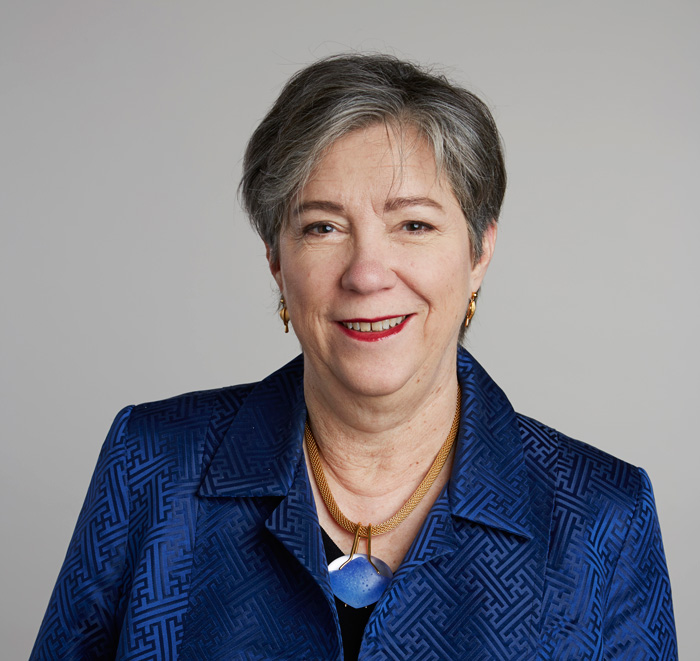Guest post by Christine Queitsch.
Last week when the scientific community lost one of its brightest and most innovative minds, I lost my long-time mentor and the closest thing to a mother since I lost mine. Susan Lindquist had found me in a basement laboratory in the former East Germany, in 1992, shortly after the Wall fell. I couldn’t speak much English but I could read some, and working in a heat shock lab, I knew her work. When we met, my few words and half-sentences tumbled over each other. But while Sue had a powerful presence, she could speak with anyone. We managed to begin discussing science and never stopped until last week.
Sue understood that I had applied for a Fulbright fellowship to study in the States. Before leaving she took my hands in hers and told me to join her in Chicago should I get funded. I did, and Sue convinced the Fulbright people to change my assignment to the University of Chicago. I still have her letter with the handwritten note discussing child care options for my three-year-old son. Within a week of my arrival, and totally dazed, I knew I wanted to stay. Sue’s lab was a melting pot of scientific concepts, loosely connected by a common interest in protein folding. I had never learnt so many different things in so short a time. As the lab’s first story on yeast prions was about to break, researchers around me were starting to think about testing models for Parkinson’s, Alzheimer’s and Huntington’s diseases in yeast. Cell and organismal biology, genetics, biochemistry, synthetic biology, drug testing, and evolution—all in one lab. An electric atmosphere!
As a European student, I was pleasantly shocked to find no hierarchy in the lab. None. An undergraduate student with a good idea could work on it and coauthor a paper with Sue. There were many women in the lab, including others with children. Sue made it possible for us to be both scientists and mothers. My son sometimes spent afternoons with Sue’s daughters and their nanny while I worked long hours; her husband picked up my son from choir practice together with one of their daughters. Sue had pointed advice for working mothers to maximize their time in the lab without distractions: find a supportive partner (!), live within walking distance to work, find flexible child care, live in small quarters to minimize housework, and don’t be shy to accept help.
Sue’s door was always open; if there was interesting science she wanted to hear it. She saw surprising connections between disparate pieces of evidence or even different projects. She sparkled with creativity and joy when she saw an unexpected result, a trait she never lost. During a recent Seattle visit, I showed her a yeast plate with pilot data for a crazy idea; she looked up, all intense excitement: ”Aww, Christine, you must think of applying this to cancer.” Cancer and yeast? Our meeting time was up, but she got me thinking of the connection (and I still am).
Sue worked intensely on every manuscript—one of my papers took over a year to write. When I gave her my first draft, she commented that “this needs a lot of work” and handed me Strunk & White’s Elements of Style. Indeed. Every word was weighed, concepts considered, once, twice, and again. When I nervously brought her a well-prepared argument that changed the entire story, she heard me out, agreed, and we re-wrote the manuscript yet again. While this may sound tedious, even frustrating (and at times, it was), her attention to detail, her keen logic, and her joy of science shaped me and all of us. She taught me to love English, to appreciate its many nuances and impeccable precision. I remember three of us graduate students with graduations looming, contemplating where to go for postdocs. Where else would we find this intellectual dynamism, this exciting diversity of thought, yet also this insistence on rigor and this personal attention? We had no idea. I solved the dilemma by following Sue to Cambridge to become a Bauer fellow.
Sue was exceedingly warm, a formidable ‘science mother.’ She had my back when my parents fell gravely ill in Germany; she was there for a fellow graduate student when tragedy struck her family. When I whined on the phone earlier this year that I had failed to get a scientific award, she told me to pick myself up, all would be ok, and anyway, it was not as hard as chemotherapy. Sue made it easier to bear bad news and she celebrated good news, sending cards and gifts for new babies, weddings or tenure.
Sue was genuinely funny and fun. She delighted in parties and held many. She loved to dance the tango! And since the Chicago Cubs have just won the World Series, here’s one last story. She took us to baseball games. Imagine the heat and humidity of a Chicago summer afternoon, all of us foreigners not knowing what to make of this strange game. Sue had treated us to beer and brats, so this was great. While she was cheering loudly, most of us had no idea what was going on. She hopped up and down our long row of seats, explaining the rules and spraying us with water so we would survive the heat. It was hilarious. To this day, I take my family to the ballpark. Sadly, it’s never hot enough in Seattle to pull out the spray bottle, but I always bring one just in case.
About the author: Christine Queitsch is an Associate Professor of Genome Sciences at the University of Washington.































